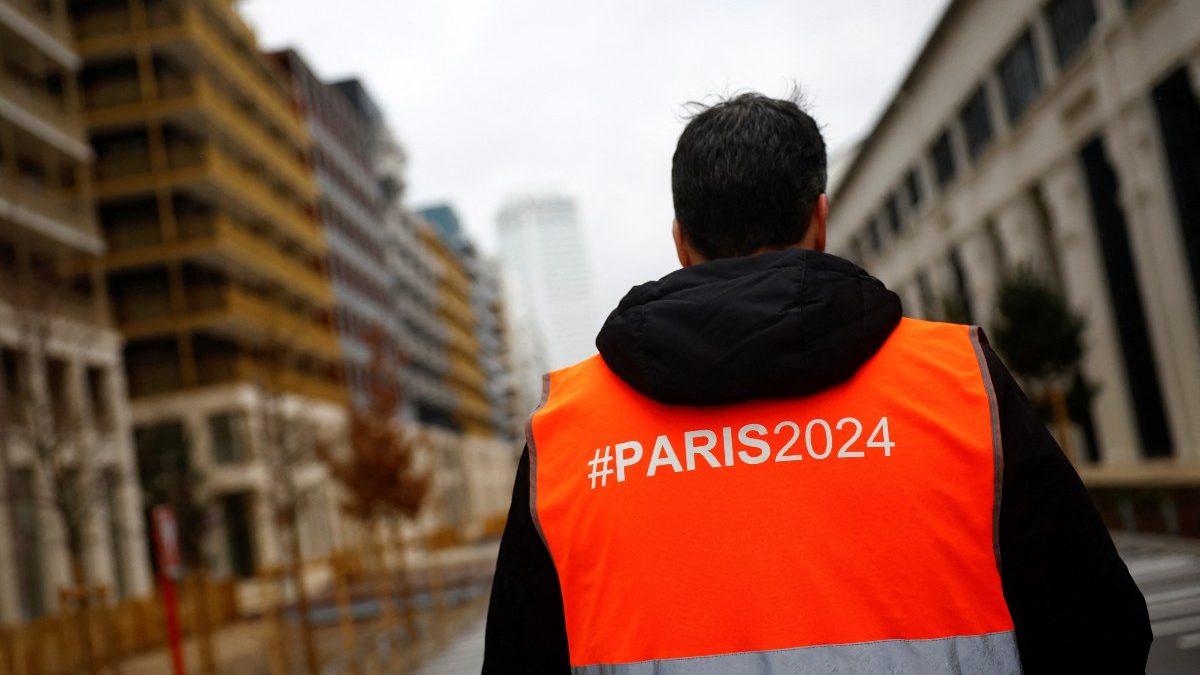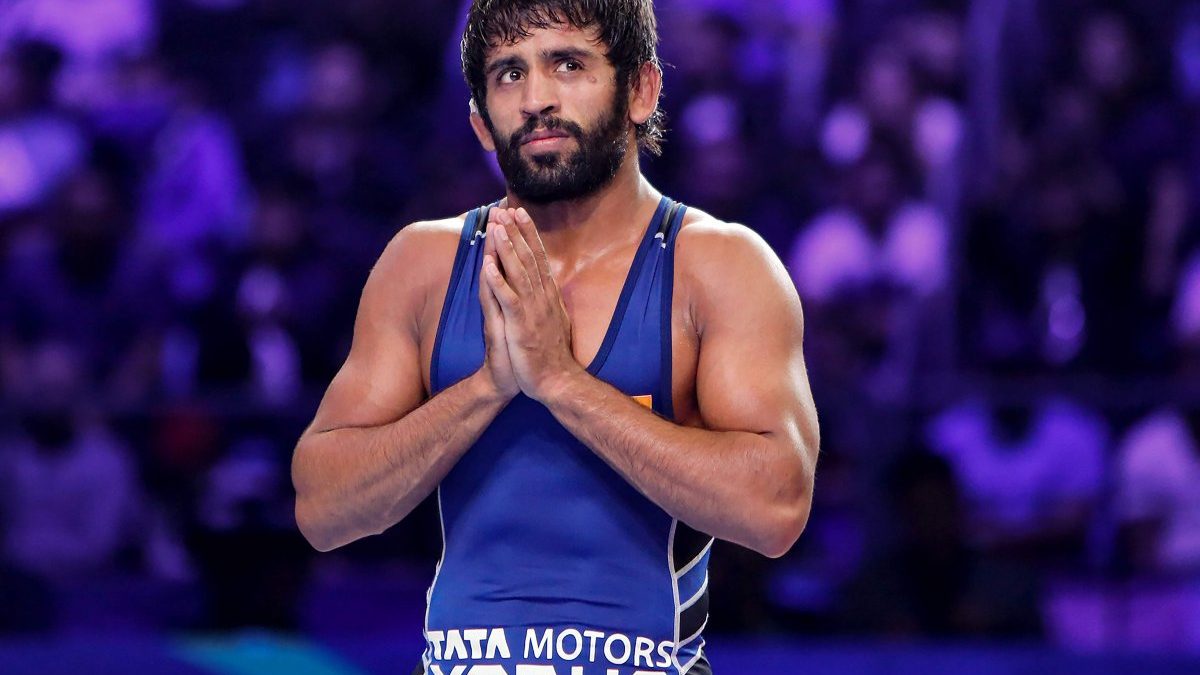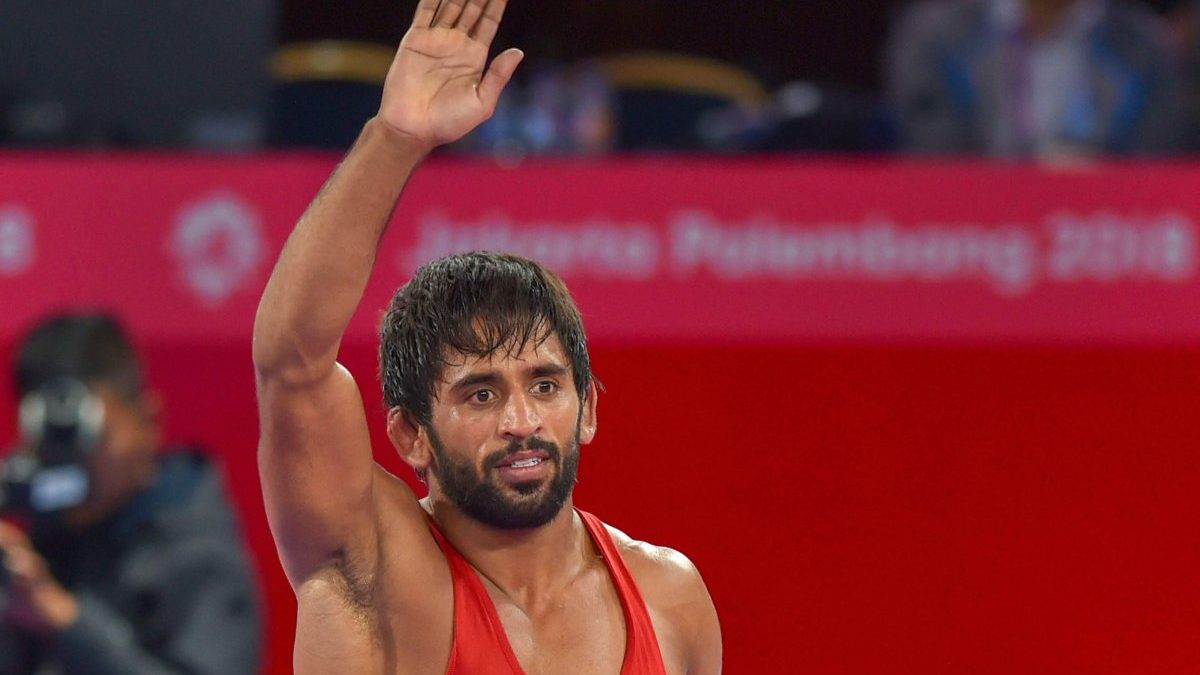Note: Recent reports suggest that Yogeshwar Dutt could get the gold after champion Toghrul Asgarov also tested positive for banned substance. However, this development hasn’t been confirmed by the IOC yet.
Yogeshwar Dutt may have his bronze medal at the London Olympics turned to silver if the International Olympic Committee (IOC) strips the late Russian wrestler Besik Kudukhov of his second place in the 60kg freestyle category competition of the 2012 Games because of a positive dope test.
The positive test, in re-analysis of London samples, has been reported by wire agency PTI, quoting wrestling website flowrestling.org which broke the story. The report said that the International Wrestling Federation (UWW) would be required to convey the news of upgrading Yogeshwar’s medal following intimation from the International Olympic Committee (IOC) about the positive test and subsequent disqualification of the Russian wrestler.
Yogeshwar had lost to Kudukhov in the opening round of the London Games but since the Russian went onto reach the final, the Indian became eligible for the repechage rounds and eventually managed to win a bronze. The rules stipulate that in case of a disqualification the bronze medallist who fought in the repechage round that involved the disqualified wrestler would get the medal upgraded. Wrestling provides two bronze medals.
Kudukhov died in a road accident in December, 2013. Yogeshwar, after initially dedicating the ‘silver’ to the nation has tweeted that he would be happy to see Kudukhov’s family retaining the silver medal rather than receiving it.
The re-allocation of medals following a doping disqualification is entirely up to the IOC. It is not automatic. A question doing the rounds is whether a deceased competitor could be stripped of his medal without giving him a chance to defend himself before a disciplinary panel set up by the IOC.
Such a practice is routine in all doping cases in all competitions and the IOC has followed that pattern so far in the latest series of decisions related to Beijing and London sample re-analysis.
“Is IOC really stripping a London 2012 silver medal from Besik Khudukov? How does he appeal given he is dead?”, tweeted Richard Ings, former CEO of the Australian Sports Anti-Doping Authority (ASADA) and a leading anti-doping campaigner.
The disqualification of a result in a competition in which the athlete tested positive is automatic irrespective of the final sanction imposed on him/her. The only way for an athlete to escape disqualification would be to prove that the positive test was faulty. Yet, in the Russian’s case the question can always come up that he couldn’t be present to defend himself at the first hearing itself.
A doping disqualification does not require a full-fledged hearing process. Normally, the IOC conducts a quick hearing at the Olympics, disqualifies the athlete, strips him/her of the placing, withdraws the accreditation and forwards the case to the international federation concerned for further action including suspension. In the present bunch of cases also, the IOC has been advising the international federations to modify the results and take further appropriate action while retaining the right to re-allocate medals.
Yogeshwar would already have been tested in London since the IOC has been testing the top four or five competitors in individual events at the Olympics. Reports have indicated that his sample would also be re-tested if the silver is to be awarded to him.
The large number of positive tests coming out of retrospective testing of samples from the 2008 Beijing Olympics and the 2012 London Games should be encouraging as well as disappointing, depending on how one views the development.
It is encouraging dope cheats are getting caught, no matter after four years or eight years of their “deceitful” campaign in Olympics. It is disappointing that so many of the dopers had flourished in the past Games, denying many a champion athlete their proudest moment. It becomes all the more painful when you get your medal in front of a food court at an airport, as American shot putter Adam Nelson found himself while getting his gold medal from the 2004 Athens Olympics. The shot put competition was one of the most spectacularly-staged, inside the stadium in ancient Olympia, taking the modern Games to its roots.
Nelson had finished second to Ukrainian Yuriy Bilonog in Athens but was upgraded to gold when Bilonog tested positive in re-tests ordered by the IOC in 2012. Bilonog happened to be one of the five athletes who tested positive in re-analysis of Athens samples. Three others were also medal winners. Athens was not the first Games where the IOC resorted to re-testing of stored samples. Five athletes including Bahrain’s Morocco-born Rashid Ramzi, the 1500m champion in 2008, were sanctioned following retests in the Beijing Games specifically ordered to detect CERA (Continuous Erythropoiesis Receptor), a kind of EPO (erythropoietin), the red blood cells boosting drug, popular among endurance athletes.
Following an advisory from the World Anti-Doping Agency (WADA) in 2012, the IOC decided to re-test a select batch of samples from the Athens Olympics. That proved successful though in a limited way. Samples were stored for up to eight years during that time.
“This is the very message we wanted when we asked people to store samples for eight years”, the then WADA Director General David Howman had said. “If you cheated and you thought you got away with it you might have to think again. Don’t look yourself in the mirror until the eight years are up.”
Every year, WADA-accredited laboratories and independent researchers, funded by WADA, IOC or other organisations, are coming up with newer tests and methods to detect prohibited substances in samples. The IOC and other sports bodes are utilizing the opportunity provided by these new methods and latest instruments to get samples re-analysed in order to catch dope cheats.
Stanozolol and Oral-Turinabol (chlorodehydromethyltestosterone), another steroid, reportedly the drug of choice in the GDR doping system from the 1960s, are two drugs that are coming up more than others from newer tests that allow detection of substances through a longer period. Laboratory scientists have explained that under the new ‘long-term metabolite’ method, they may be able to detect steroid use even after a six-month period unlike what has been believed to be a six-week-to-two-month detection window for most steroids in tablet form.
Re-testing of the samples from the 2006 Winter Olympics had reportedly started but there was no word from the IOC about any positive results. The IAAF was also reportedly planning more tests from its past World championships which could fit into the time-frame allowed under the rules.
So far, the IOC has announced 98 positive cases or presumptive adverse analytical findings from retests of Beijing and London samples. The process may continue for some more time. More than 15 cases have been handled by IOC disciplinary commission from these retests, all being disqualified and referred to international federations for further action.
The present drive is seen as the IOC’s continued push towards providing a level-playing field for the athletes.
It had, however, started from the 2004 sample re-testing in 2012, apart from a limited exercise with some Beijing samples in 2009. “You always want to wait until science gives you the most sensitive tests,” the then IOC President Jacques Rogge told the media. “When we retested the athletes for Athens they had undergone testing that was negative. Since then there has been progress; we were informed about better tests and new tests. The more time you have the bigger the chances that science will deliver better tests.”
The statute of limitations that restricted a doping charge being framed to fall within an eight-year period for it to be considered as an anti-doping rule violation case till 2014 has now been amended to accommodate cases up to a ten-year period in the 2015 Code.
The 2004 re-testing ended in 2012. The 2008 cases will come under the new 10-year limitation since in January 2015 they had not completed the eight-year time-limit.
The IOC has been storing all samples from 2004 onwards in the Lausanne laboratory. Some of the international federations, notably the International Association of Athletics Federations (IAAF) has also been storing them. In 2013 the IAAF retested some of the samples from the 2005 Helsinki World championships and among those caught happened to be Russian long jumper Tatyana Kotova, who had won the World Athletics Final in Monaco the same year. Her disqualification led to the upgrade of India’s Anju Bobby George from silver to gold.
A laboratory is expected to keep non-positive samples only up to a period of three months unless the testing authority has requested retention of the samples for a longer period.
The re-testing process involves splitting the ‘B’ sample into two – B1 and B2. They thus become equivalent of ‘A’ and ‘B’ samples. This methodology has been adopted by the IOC since ‘A’ samples transported to Lausanne were not sealed individually, as per regulations then, possibly leading to a legal loophole.
Athletes were conveyed findings of presumptive adverse findings after testing the residual ‘A’ samples and informed of their right to be present at the time of opening the ‘B’ sample bottle for confirmatory tests, even though, the IOC stated, this was not a mandatory requirement. The majority of the athletes did not attend the procedure.
The IOC had concentrated on athletes who were likely to compete in Rio in drawing up its re-testing pool of samples prior to the games. It is now likely to focus on potential dopers based on intelligence gathered through various sources.
There is no specific group or placing-bracket that is being targeted in these retests as can be made out from the positive tests reported by the IOC. Qatar’s Samuel Francis, former Asian champion and Asian record holder, who was 16th in the 100m in Beijing, and did not start in the 200m, is one of the athletes to have tested positive from re-analysis. He tested positive for stanozolol, the steroid made famous by Canadian Ben Johnson in the 1988 Olympics in Seoul.
One of the other cases announced by the IOC was that of hammer thrower Pavel Kryvistski of Belarus who finished 28th in London for Oral-Turinabol. One weightlifter, Nurcan Taylan of Turkey who did not even finish her 48kg event, was retested and found positive for stanozolol.
This can only mean that anyone, not just a medallist or a fourth or fifth place finisher could be targeted for a possible retest in the coming years since the IOC has the authority to test any sample any time within a ten-year period.
The entire range of prohibited substances are normally tested for in urine sample analyis in a laboratory during the Olympic Games or World championships or similar competitions. EPO and human growth hormone (hGH) tests require blood samples and these are collected in smaller numbers compared to urine samples. These tests may take more time than routine urine sample testing. EPO testing requires an initial screening of blood sample followed by a urine analysis. A stand-alone urine test is also available. EPO testing is costly.
Blood samples are also collected for the purpose of Athlete Biological Passport (ABP) in consultation with the international federations so that when compared with previous samples if there are abnormal values these could be followed up.
The message to potential dopers is clear from the ongoing cleaning up based on re-analysis of past Olympic samples: Be ready to face the music even if you escape for the time being.


)




)
)
)
)
)
)
)
)